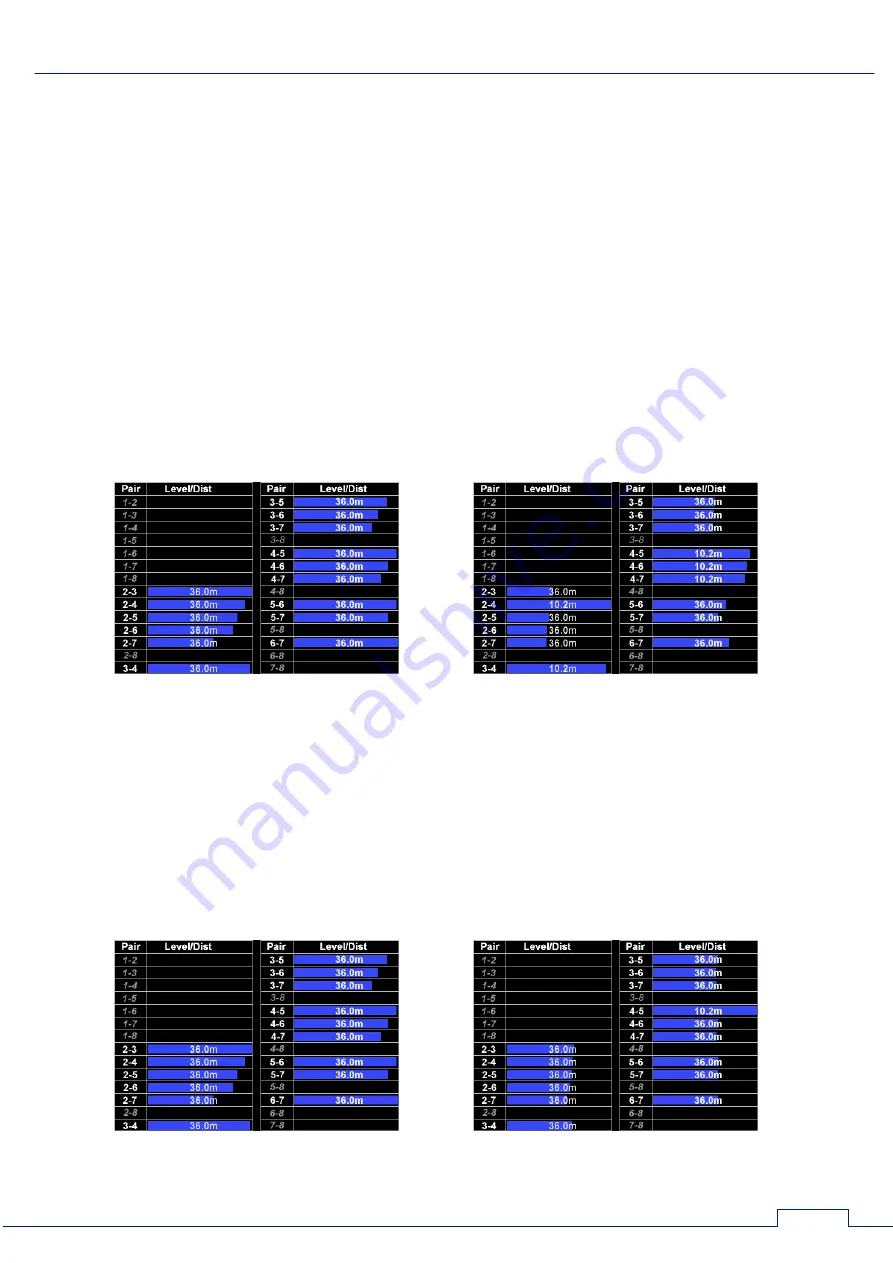
BASIC OPERATIONS
72
1. Response levels in twisted pairs are not the same (in pair 7-8 this level is lower than in the
other three "linked" pairs).
2. Distances to heterogeneities with maximum response levels in "non-linked" pairs are not the
same. In all "non-linked" pairs, where wires #7 are involved, the distance to the heterogeneity is
less than the distance to the end of the cable in the remaining "non-linked" pairs.
3. Response levels in "non-linked" pairs are different. The response levels in all "non-linked" pairs
with wire #7 are slightly higher than in other "non-linked" pairs.
4. The response levels in the "wire and shield" pairs are not the same. In the 7-SH pair, the level
is higher than in the other pairs with the shield.
5. The distances to the heterogeneity in the "wire and shield" pairs are the same, with the
exception of the 7-SH pair, where the distance to the heterogeneity is fixed at a distance much
smaller than in the other pairs.
CONCLUSION:
the reference structure is broken. The probable cause of structure violation is
a defect in pair 7-SH (parallel connection at distance ≈ 21 meters from the beginning of a cable).
Serial connection to a wire in a flat cable
Cable without defects
Cable with defect
1. In all combinations with wire #4 the level of a response is higher.
2. In all combinations with wire #4, heterogeneity is detected at a distance shorter than the cable
length
CONCLUSION:
the reference structure is broken. The probable cause of structure violation is a
defect of wire #4 (serial connection to the wire or a break at a distance of ≈10 meters from the
beginning of the cable).
Parallel connection to pair in a flat cable
Cable without defects
Cable with defect
















































